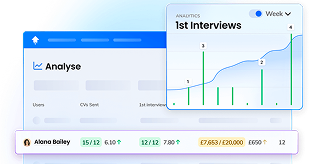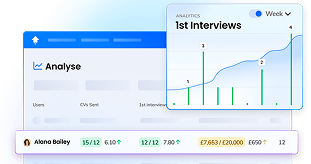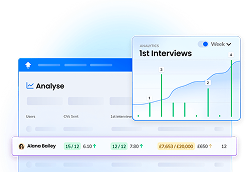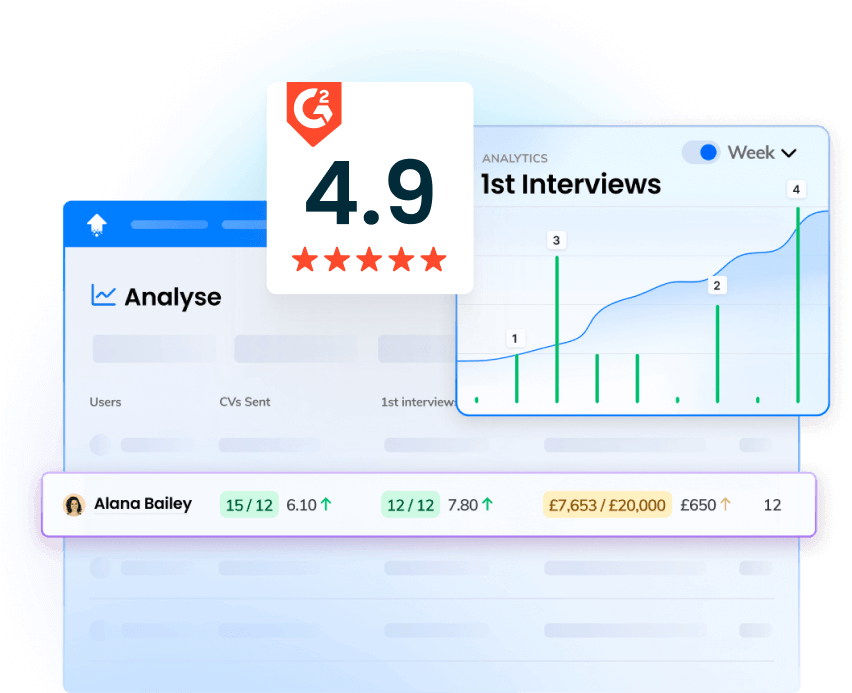Every human responds differently to varying environments. Some will adapt to remote working just fine, whilst others will struggle. Despite the heroic grind that recruiters embrace day-today, they aren’t superhuman; many will struggle moving from a social, office-heavy role to an isolated, fully remote one.
This will challenge leaders and managers to show their capability to adapt not just to changes to their own environment, but to changes to their team’s environments too. It’s critical to understand what factors may influence the ability to deliver at home in order to pull through this epidemic in one piece.
Challenges
Social Isolation
It’s undeniable that we live in an impressively connected world. Ironically, many of us feel less connected now than ever before. Part of this comes from a lack of physical connection – this doesn’t just mean shaking hands or embracing a friend, it also refers to sharing physical space with others. Yep, even commutes count!

In the situation the world finds itself in today, creating this physical connection is difficult, if not impossible. Companies that rave about having an excellent physical environment to work in are finding themselves challenged; how can they meet the needs of their workforce? Research suggests that a lack of connection can lead to a reduced sense of belonging as well as increased intention to leave the company – something no employer wants to face.
Face-to-face Management
Building on social isolation, a lack of face-to-face supervision can be felt by both sides of the management equation. On a motivational level, employees lack the ease of access they enjoyed in the office along with the reduction in communication quality that follows with a move to remote working.

Managers may worry that their staff aren’t working as hard as they could be, and employees may feel pressurised to do more so they don’t appear unproductive. As great as video tools like Zoom are for remote 121s, it’s much more engaging to have a conversation face-to-face.
Distractions at Home
Parents will feel this one more than most. Home carries many distractions, ranging from kids and pets to chores to making a 4th cup of coffee in as many hours. But the “unspoken” distractions of home life can weigh in far heavier than the obvious ones.
Home is often familiarised with down time – a place to relax and “live” rather than work. Our usual behaviours at home are unassociated with work, and habits we’ve built up over the years can pull strongly against our need to work.

Relating to a lack of face-to-face management, the stress this can create for individuals working remotely can be immense. People are very openly stating they’re finding a home-working life difficult and all of these factors can stack up.
Access to Information
The greatest shock to many individuals moving to remote working will be the flow of information – or a lack of it. A 10-second stroll across the office to ask someone a simple question can now take hours to be answered over email/Slack/Teams. Online calls can be plagued by various issues, and update emails often end up buried.

In a role where metrics matter, communicating target progress can become incredibly challenging for managers. Autonomy sits as one of the five pillars of human motivation and with remote working enforcing it, giving recruiters access to their performance numbers is critical. The issue of emails being buried resurfaces once again though, and managers will need to get creative to ensure the intended impact is felt.
Solutions
Remote Interaction with the Team
There’s no silver bullet when it comes to addressing social isolation, but successful remote managers develop a routine for the team to follow. Where roles are independent, one-to-one calls may be best, whereas collaborative roles may find team calls work better.
We recommend a group call in the morning to start the day as a unit, then one-to-one calls follow in the afternoon to give direct reports the private time with their managers they need during this time. These meetings don’t need fixed agendas, but we’ve seen companies starting off with “social time” (5-10m eating breakfast and chatting – the stuff that goes on when the team first gets into the office) before moving into team-wide achievement and company updates.
One-to-one calls should definitely focus more on the “human” – how are they coping, what’s bothering them, what do they need to know etc. Weekly performance reviews are useful, but don’t overdo it – it can come across as micromanagement.
There are countless recommendations online for building peer-led interaction such as pub quizzes, themed calls and movie nights. We wrote about other great examples of how companies are being creative on this front before.
Ramp Up 121 Time
Expanding on the above, remote working adds a lot more time to your day. Hours can be saved thanks to no commuting and not having to travel to meetings only adds more. There’s no setup work to do in a meeting room before it kicks off – you can dive right into the meat and potatoes of a productive meeting in seconds.
Why not leverage that time to interact with your direct reports more frequently? Coach and mentor them, keep them informed, check in on them and their family during testing times. This is a fantastic opportunity to go above and beyond expectations not just for our customers, but for our teams too.
If you’re feeling bold, you can operate an “open door policy” online too. Make yourself available in a Zoom call for one afternoon a week and invite anyone to come in to ask questions or just have a general chat.
Leverage Flexible Hours, But Set Expectations
Home life is full of distractions. Rather than fighting against distractions, allowing employees to flow with them could be the key to productivity. Flexible working isn’t a new concept and whilst at home, it could be even more effective than in the office. After all, what’s better – 6 hours of focus, or 8 hours of fractured focus? Flexible lunches and finish times are much the same.
The hours worked don’t matter as long as expectations are set. Be clear with your team – what’s the expectation you have of them? What numbers do they need to hit? What delivery needs to happen to keep the company on the straight and narrow?
Absolute trust is required in this situation. Although if you don’t trust your team, a good question to ask is “Why did I hire them?”.
Transparency with Numbers
Most critically, visibility will help your team self-motivate. There’s only so much we can do as managers to keep our teams productive and engaged; part of it needs to come from the individual. The best thing managers can do is enable that as best they can.
Daily reviews of progress, on a one-to-one or group basis, are a fantastic way of achieving this. Summary emails work well too, and reward-driven casual competitions are a great way of putting a spin on what can be viewed negatively by some people.
If your existing systems aren’t very effective on this front, there are other tools that can help.

















